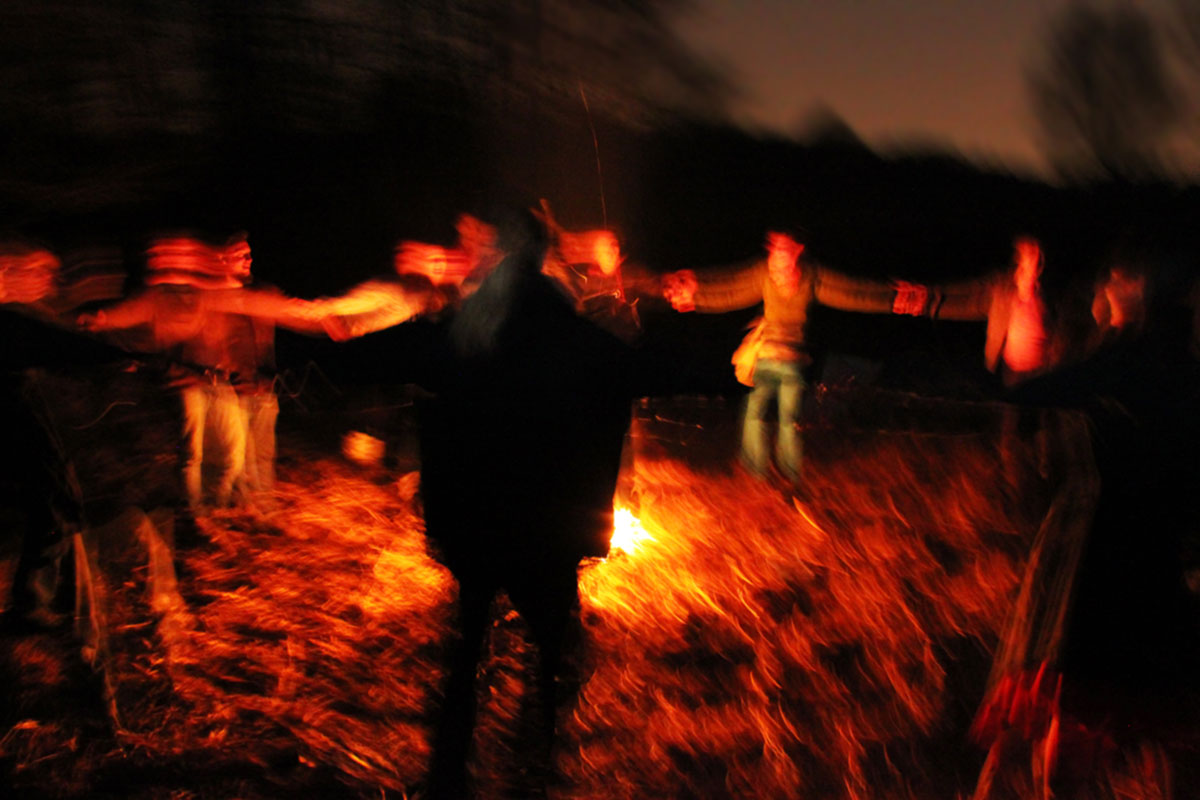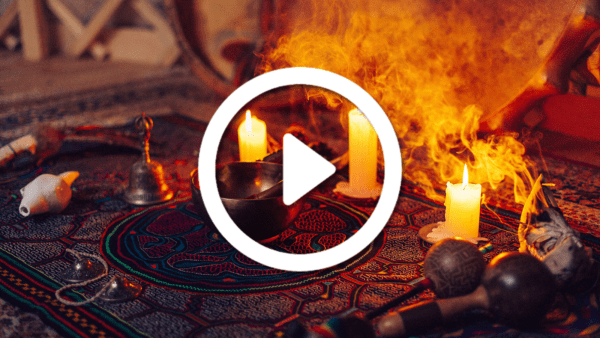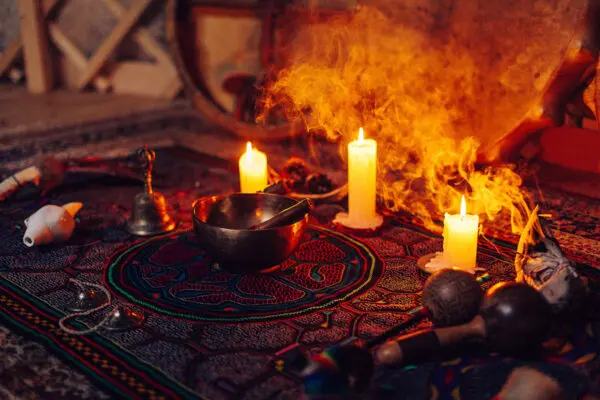Different cultures have been using psychedelic substances in rituals for thousands of years. In many cases, these plants are still used in ceremonies to this day. The use of psychoactive plants like iboga, peyote, ayahuasca, and psilocybin has been more than a social aspect of various cultures; these plant medicines are an integral part of religion and spirituality.
Evidence of the reverence some cultures had for psychedelic encounters is well-documented in many ways, from verbal history to depictions drawn on walls of caves that communicate the spiritual significance of experiences facilitated by medicinal plants.
Many societies that still hold psychedelic ceremonies maintain the traditions of their lineage in this modern age, honoring the wisdom of their ancestors through the practice and application of psychedelic plant medicine.
Here, we will explore which cultures are known to have psychedelic ceremonies and what past, present, and future significance they hold within society.
Amazonia, South America
Some indigenous people of the Amazon and certain surrounding areas of South America have deep spiritual and medicinal traditions in ayahuasca, a liquid brew that is consumed in a ceremonial context.
Ayahuasca is made from two plant substances, the woody bark of the vine Banisteriopsis caapi and the leaves of Psychotria viridis. Together, these plant sources combine beta-carboline alkaloids (which are monoamine oxidase inhibitors, or MAOIs) with N, N-Dimethyltryptamine (DMT) that produce the hallucinogenic effects of the brew.
Some say that the value of the medicine lies in its ability to facilitate meaning by allowing a person to access deeper realms of knowledge, work through pain and trauma, and experience personal healing.
Ayahuasca shamans (called Curanderos, Onanya, Ayahuasqueros, and more) integrate plant medicine into their own journeys of growth and education, using the plants to connect with the spiritual realm and learn how to better help others who come to seek their guidance.
Oaxaca, Southern Mexico
In the mountains of Oaxaca, Mexico, the indigenous Mazatec people have a long and rich history of using psilocybin-containing mushrooms (or magic mushrooms) and salvia in a sacred ritual practice known as the velada.
There are 53 known species of hallucinogenic psilocybin mushrooms in Mexico that are considered sacred by indigenous cultures there. The exact history of their use is a subject of debate, however, it does predate the Spanish Conquest in Mexico with potential evidence of use in the 16th century.
There are three species of psilocybin frequently used as medicine in ritual after the person seeking to be healed undergoes a period of preparation with strict guidelines for diet and behavior. Once the medicine is administered, a healer utilizes one or more methods of divination to determine if and how a person is to be healed or discern an alternate future.
Unfortunately, the 1950s discovery of such psychedelic rituals by curious Westerners traveling in the mountains of Southern Mexico exploited their significance in Mazatec culture as tourists searched for the novelty of psychedelic experience with little regard for its cultural context.
Northern Mexico and the Southern United States
Indigenous people of central and northern present-day Mexico have revered Lophophora williamsii, the cactus better known as peyote, throughout their spiritual history. The active ingredient in peyote is mescaline, which produces hallucinogenic effects thought to facilitate deeply spiritual and healing experiences for the seeker. The ceremonial culture of peyote eventually migrated to the tribes of the southern United States, where it remains a vital aspect of spiritual life.
Profound rituals with fragrance cedarwood fires and burning sage are still traditions sometimes honored in psychedelic ceremonies practiced by indigenous people, including members of the Native American Church in the United States. While peyote is eaten or sipped as a tea, the environment reverberates with the prayers of leaders and the rhythmic banging of drums. There is an intention of healing and finding wholeness to each ritual, with friends and relatives of the seeker often attending and participating.
Mescaline is illegal for common, personal use for most people, but the church is an exception to the law due to its important spiritual relevance to the culture.
Gabon, Central Africa
The religious tradition of Bwiti is practiced by many people but is widespread in Gabon (central Africa) amongst cultures like the Mitsogo, Fang, and Punu. This system of belief is centered around the psychedelic properties of bark from the Tabernanthe iboga plant, which contains a substance known as ibogaine as well as 12 other psychoactive alkaloids. As a system of belief deeply rooted in ancestral connection, the word Bwiti itself means “dead” or “ancestor” depending on the translation.
Iboga has been used for thousands of years in medicinal and spiritual applications, leveraging the deep psychological effects that Bwiti followers believe facilitate healing and growth.
Iboga ceremonies are often conducted for the initiation of banzi (new members) into the tribe. A banzi describes their experience with iboga to the elders, who use the banzi’s reports to create and give them a name.
The N’ganga, the Bwiti form of a shaman, leads members of the community (and sometimes curious outsiders) in ceremonies where iboga is consumed, producing meaningful visions believed to be a critical part of initiation to the Bwiti system of belief and other ritualistic practices that can have a variety of intentions.
Modern threats to tradition
Unfortunately, some naturally occurring psychedelics that are cultivated for spiritual ceremonies by various cultures around the world are threatened by unsustainable harvesting. For example, iboga is an endangered plant and has become scarce for even Bwiti members. Peyote may be facing extinction if significant efforts are not taken to restore its wild habitat and protect the plant.
In most cases, these problems occur due to the increasing popularity of psychedelics among westerners, where the novelty of a psychedelic experience tends to be of higher priority to consumers than the potentially negative impact of their actions on the environment and culture of origin.
For more information about endangered psychedelic plants used spiritually and medicinally, check out Psychable’s articles about peyote and ibogaine sustainability.
While visiting outsiders may have good intentions for their personal journey, harmful behavior such as cultural appropriation is a prevalent issue in the psychedelic sector. By definition, cultural appropriation occurs when members of a more privileged identity adopt and claim the traditions of historically marginalized people. The culture being appropriated may be obligated to entertain the whims of the people who are stealing their traditions, even if it means enduring the painful impacts of ignorance and insufficient respect for something deeply meaningful to them.
Cultural appropriation can also mean that a member of the dominant culture makes financial or social gain by appropriating the technologies of a people who may still be facing marginalization. Even in cases of unintentional cultural appropriation, there is the potential for damage to the dignity of a people and the legacy of their sacred traditions.
Some organizations and retreat centers seek to minimize the detriment of this trend by practicing sacred reciprocity. Employing indigenous people, redistributing profits from retreats within the community itself, educating tourists or foreign participants, and utilizing sustainable harvesting practices are a few ways reputable facilitators of ceremonies can operate ethically.









